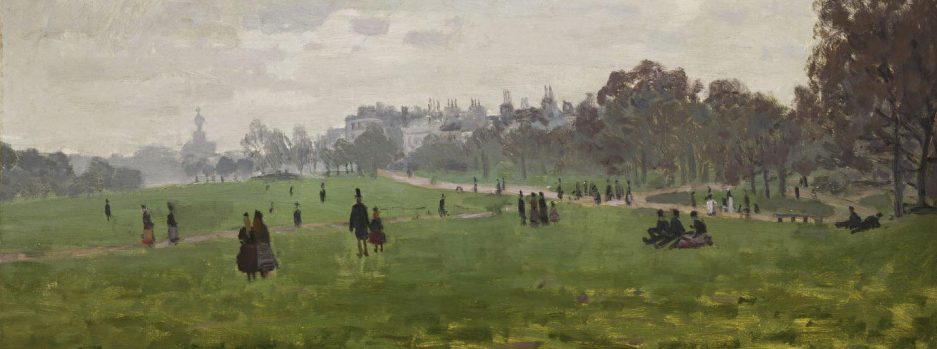All pictures without external links were taken by the author during his visit to The Met Breuer, New York. Texts sourced from exhibit label scripts.



Though he was enjoying considerable professional success and increasing recognition in Germany by 1906, at this time his private life was plagued by anxiety, alcoholism, and despair, all of which led to his breakdown just two years later. Munch captures here his sense of acute loneliness and melancholy.
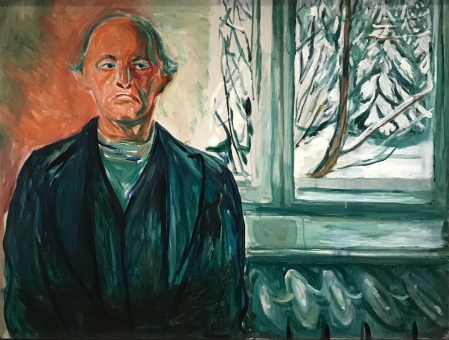
The seventy-seven-year-old artist, looking grim, stands next to a window at his house at Ekely on a winter day. Munch divided the canvas into the icy-cold, snow-covered landscape seen through the window and the rose-tinted warm interior on the left. He spent the final years of his life here at Ekely.
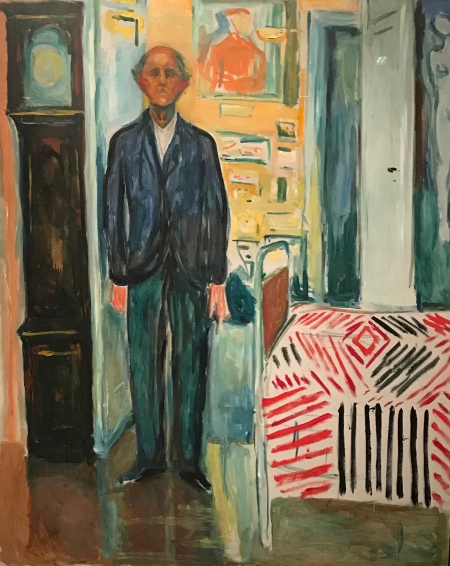

Trees from a dark mass along the coastline, and the diagonal fence creates space and depth. Heeding French symbolism, Munch presents landscape as an expression of mood.

Munch moved to Saint-Cloud, just outside Paris, in 1890. There he broke from naturalism and embraced French Symbolism, which favors emotional experience over objective observation. In this second version of the motif that he initially painted in Saint-Cloud three years earlier, a solitary figure sits near a window at night.
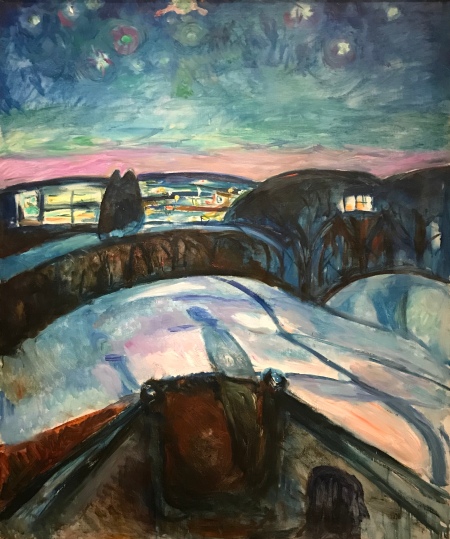
This work belongs to a group of winter views from Munch’s veranda at Ekely, his estate on the outskirts of Oslo. Light from the house creates shadows of the two figures who look out over the dark, snowy landscape. On the horizon shine lights from the city, while bright stars dance in the bluish sky.

Munch referred to the second half of his life as a “battle just to keep myself upright.” With hollow eyes and a somber expression, the stooped figure of the artist, in his house at Ekely at night, elicits feelings of restlessness and loneliness.

This work is a precursor to the first version of Munch’s famous painting The Scream (1893). In fact, the artist later referred to it as “the first Scream.” The dramatic diagonal perspective of the railing emphasizes the figure’s isolation and despair.

The third of six versions of The Sick Child, made between 1885 and 1927. Critics cared less for the motif than the artist’s embrace of an experimental, expressionistic technique, which involved the layering of short brushstrokes that seem to quiver with anxiety.

Munch used a radical technique of layering paint and then scraping away the color. He regarded The Sick Child as a breakthrough in his work, moving away from realism and Impressionism toward pure expression.
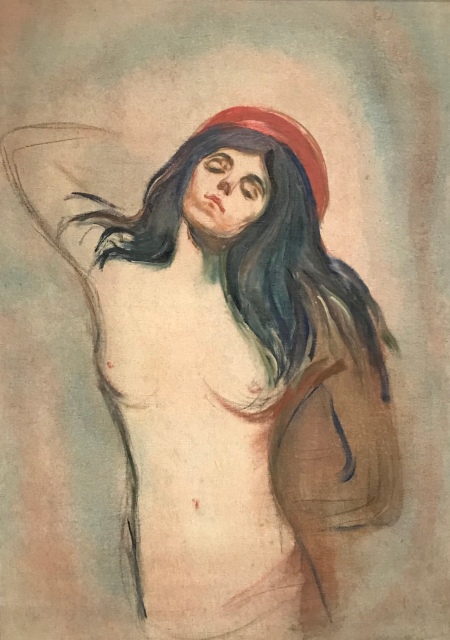
The most technically experimental example of the five paintings and two prints of this subject. Paint has been sprayed all over the surface, and only the body’s outline, face, hair, and halo have been treated with a brush. The delicate pale-blue and purple pigment form other halos around sensuous woman.
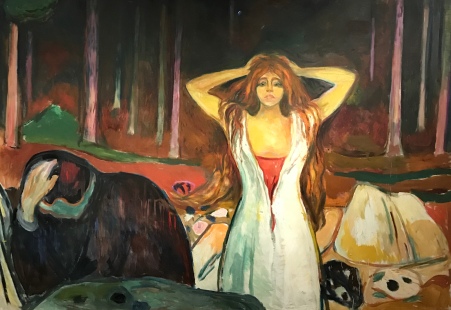
A revisit to his work in 1894 as part of his Frieze of Life series. A woeful man holds his head in his hands while a siren-like woman, dressed in red and white, exhibits her sensuous body. Behind them, a log has partly turned to ashes. Here, Munch depicts the flowering and passing of love.
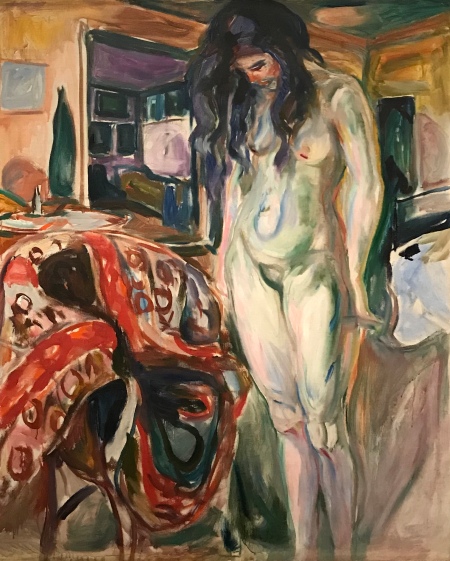
The model Annie Fjeldbu bows her head while standing in front of a wicker chair in Munch’s studio. Unlike in other paintings, she has thrown off her gown and robe, displaying her naked body. The vertical format of the canvas accentuates her elongated pale nude body, which dominates the canvas.
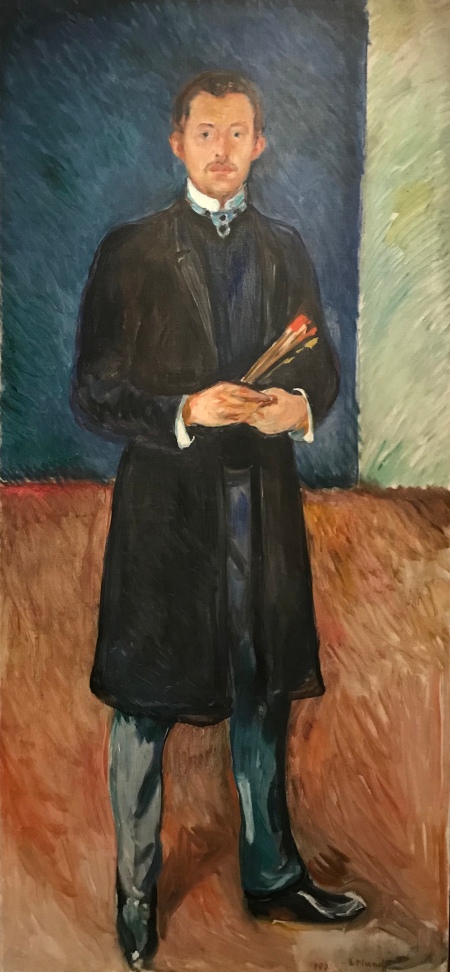
This is the artist’s first full-length self-portrait and one of only three in which he shows himself with the tools of his trade. Wearing a dark painting smock, he looks confidently at the viewer.
